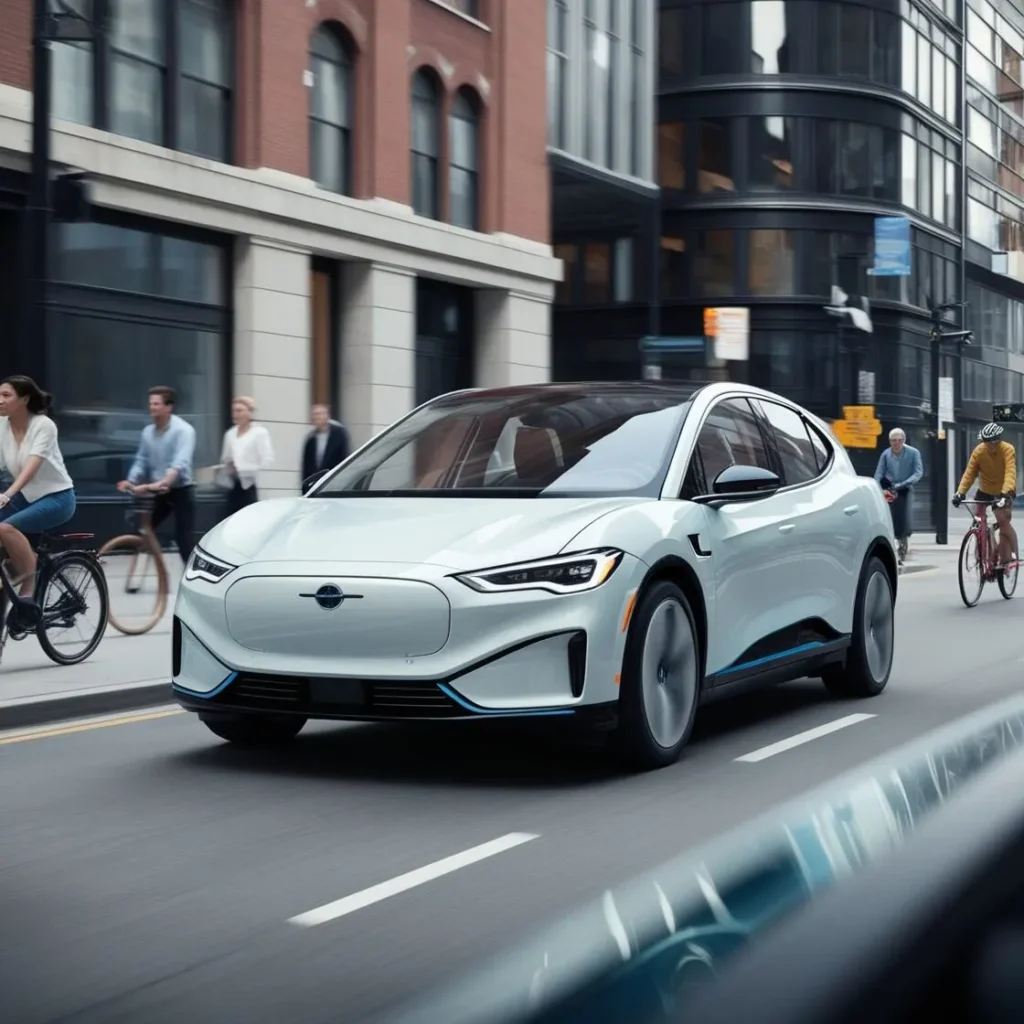Opinion: Will Electric Cars’ Silent Motors Lead to More Crashes?
Let’s talk about crashes: Electric cars (EVs) have taken the automotive world by storm, praised for their environmental benefits and quieter operation. However, this very feature—their silent motors—raises a critical question: could the lack of noise actually contribute to an increase in road accidents? In this article, we explore whether electric cars’ quiet operation poses a safety risk, especially for pedestrians and cyclists, and if the silent revolution in motoring might inadvertently lead to more crashes.

Index
The Silent Nature of Electric Cars
Electric cars are much quieter than traditional internal combustion engine (ICE) vehicles. Since they don’t rely on engine combustion, they don’t emit the same noise typically associated with gas or diesel-powered cars. While this is an attractive quality for reducing noise pollution in urban areas, it presents a significant challenge for road safety, particularly in environments where pedestrians, cyclists, and other vulnerable road users rely on auditory cues.
A report from the U.S. National Highway Traffic Safety Administration (NHTSA) found that pedestrians are 37% more likely to be involved in a crash with a quiet electric vehicle than with a conventional car. This statistic alone raises serious concerns about the potential dangers posed by the silent nature of electric cars.
Vulnerable Road Users: Pedestrians and Cyclists
Pedestrians, cyclists, and people with visual impairments are at heightened risk due to the low noise levels of electric vehicles. Many people, particularly in urban areas, rely on their hearing to detect oncoming vehicles when crossing roads or walking through parking lots. The absence of engine noise may result in pedestrians not realizing an electric car is approaching, leading to potentially dangerous situations.
A study conducted in the UK found that electric vehicles are up to 40% more likely to be involved in accidents with pedestrians than traditional vehicles, especially at lower speeds when engine noise is minimal. For individuals with impaired vision, the reliance on sound to navigate safely becomes even more critical. Without the typical auditory warning of an approaching car, they might step into harm’s way, increasing the likelihood of crashes.
The Role of Artificial Sounds
In response to these concerns, several governments and safety organizations have introduced regulations requiring electric vehicles to emit artificial sounds at low speeds. In 2021, the European Union mandated that all new electric cars be fitted with an Acoustic Vehicle Alerting System (AVAS), designed to produce sounds when the vehicle is traveling at speeds below 19 km/h (12 mph). The U.S. followed with similar regulations under the NHTSA, stipulating that all electric vehicles sold after 2020 must emit sounds when traveling at low speeds.
While these measures aim to address the risk of silent motors leading to crashes, questions remain about the effectiveness of artificial sounds. Are the sounds loud enough? Are they distinguishable from other noises in busy urban environments? Some argue that the current solutions may not fully mitigate the risks, especially for those with hearing impairments or in areas with heavy background noise.
Comparing Crash Statistics: Electric vs. Traditional Cars
It’s important to compare crash data between electric and traditional cars to determine whether the silent motors truly contribute to an increase in accidents. A 2022 study conducted by the Insurance Institute for Highway Safety (IIHS) found that electric vehicles are not inherently more dangerous than their gasoline counterparts when it comes to crash statistics. In fact, electric vehicles are generally safer due to advanced safety features like automatic braking, collision avoidance systems, and enhanced driver assistance technologies.
However, the same study highlighted that low-speed crashes involving pedestrians and cyclists were more prevalent among electric cars, especially in urban settings. This suggests that while electric cars may not cause more accidents overall, their silent motors could increase the risk of specific types of crashes—particularly those involving vulnerable road users.
Technology to the Rescue: Advanced Driver Assistance Systems
Fortunately, the rise of electric cars coincides with significant advancements in vehicle safety technology. Many electric vehicles are equipped with cutting-edge driver assistance systems, including pedestrian detection, automatic emergency braking, and 360-degree camera systems. These features help compensate for the lack of engine noise, providing drivers with additional tools to avoid accidents.
For instance, Tesla’s Autopilot system and other autonomous driving technologies can detect pedestrians and cyclists, even in situations where the driver might not hear or see them. These advancements, combined with artificial sounds, could significantly reduce the risk of accidents caused by the quiet operation of electric cars.
Looking to the Future: Will Electric Cars Lead to More Crashes?
As electric vehicles continue to gain popularity, the debate about their potential to cause more crashes due to silent motors will persist. While the evidence suggests that the lack of noise does increase the risk of low-speed accidents involving pedestrians and cyclists, the introduction of artificial sounds and the advancement of driver assistance technology offer promising solutions.
Ultimately, it may not be the silence of electric vehicles that leads to more crashes, but rather how quickly governments, manufacturers, and drivers adapt to this new reality. Regulations like AVAS and the development of pedestrian detection technologies will play a crucial role in ensuring that electric cars remain as safe as—or safer than—their traditional counterparts.
Conclusion: A Balanced Perspective
While the silent nature of electric cars does pose some risks, particularly for vulnerable road users, these risks are being addressed through technology and regulation. The future of electric vehicles lies in finding the right balance between maintaining their environmental and noise-reducing benefits while ensuring the safety of all road users. As the automotive industry continues to evolve, it’s likely that we will see further innovations aimed at reducing the potential for crashes without compromising the advantages of silent electric motors.
